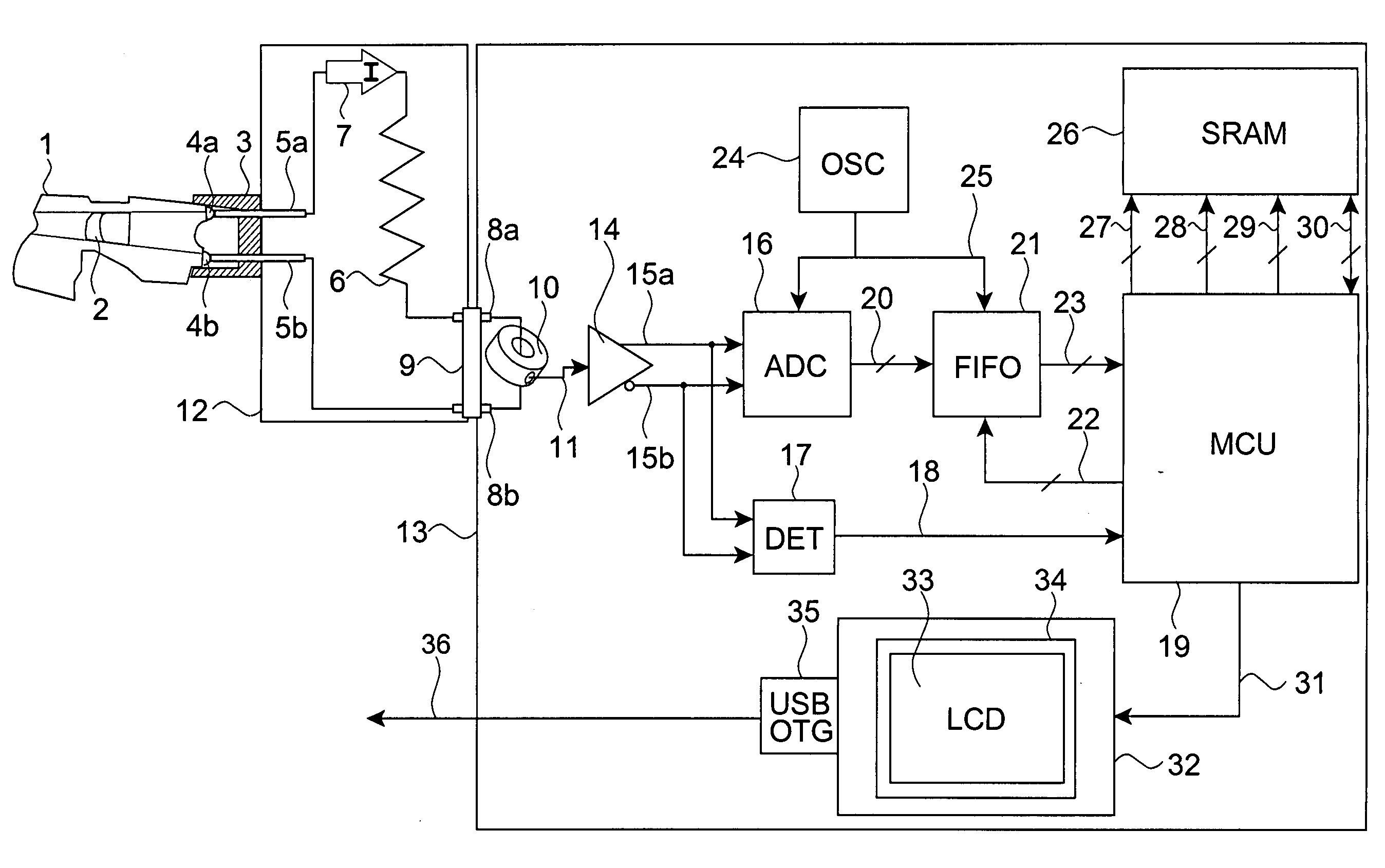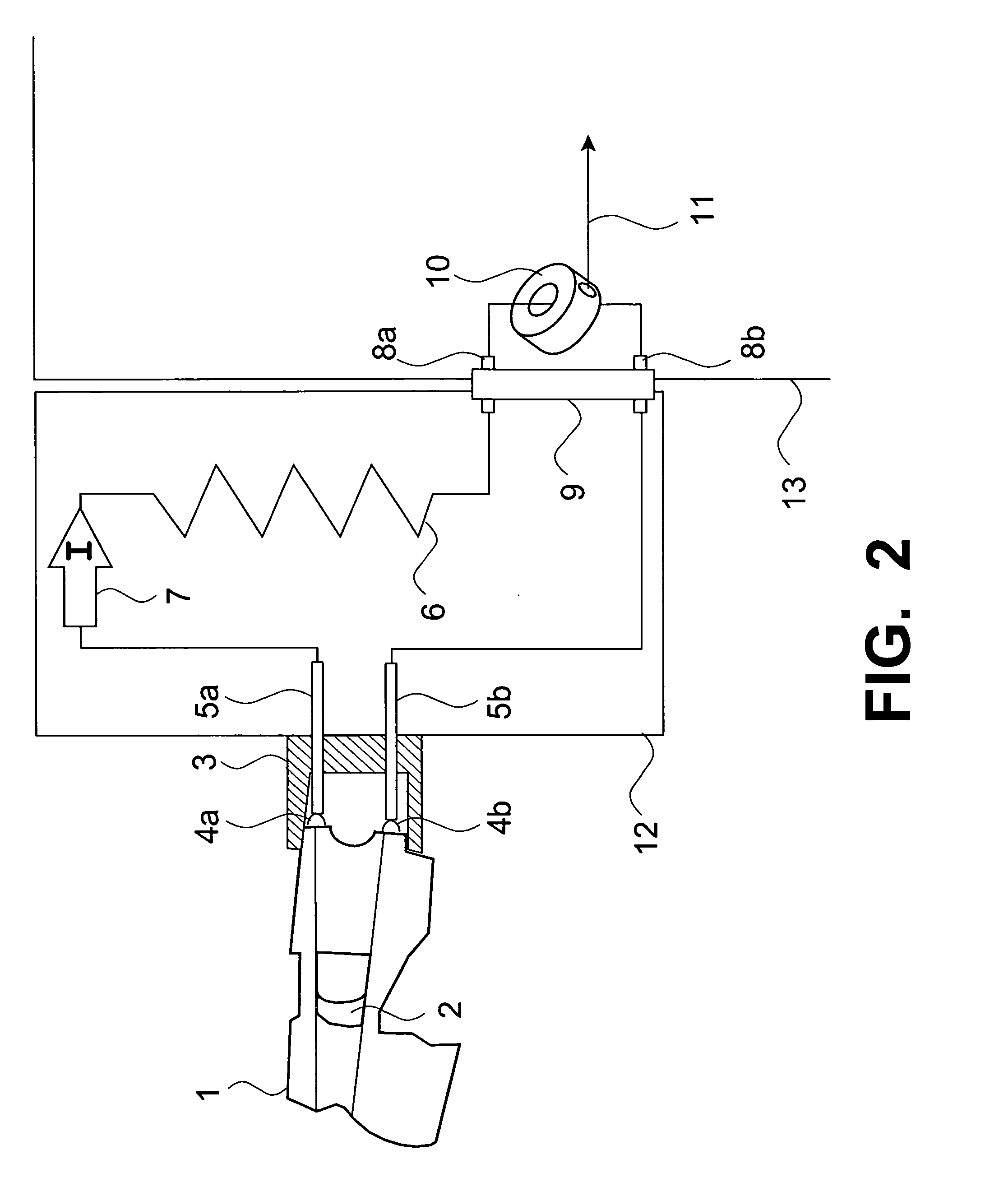Apparatus for testing a conducted energy weapon
a technology of conducted energy and apparatus, applied in the field of conducted energy weapons, can solve the problems of poor or no electrical contact between one or both projectile darts and the skin of the intended victim, death in a limited number of cases where such weapons have been used, and negative effects
- Summary
- Abstract
- Description
- Claims
- Application Information
AI Technical Summary
Benefits of technology
Problems solved by technology
Method used
Image
Examples
Embodiment Construction
[0030]The embodiment illustrated herein is not intended to be exhaustive or to limit the invention to the precise form disclosed. It is chosen and described in order to explain the principles of the invention, and its application and practical use, and thereby enable others skilled in the art to utilize the invention.
[0031]Apparatus for testing a conducted energy weapon 1 appears in the block diagram of FIG. 1, with specific details of weapon 1 being identified in FIG. 2. Referring to FIGS. 1 and 2, a conducted energy weapon 1 providing trigger 2 is inserted into receptacle 3, where a set of terminals 4a and 4b on weapon 1 connect to a resistive load 6 by means of spring-loaded contacts 5a and 5b. When trigger 2 of weapon 1 is actuated by a user of the apparatus, such as a peace officer, weapon 1 generates electrical current pulses 7 which are delivered from terminal 4a to one end of resistive load 6 as indicated in FIGS. 1 and 2. Via pin 8a of interface connector 9, electrical curr...
PUM
 Login to View More
Login to View More Abstract
Description
Claims
Application Information
 Login to View More
Login to View More - R&D
- Intellectual Property
- Life Sciences
- Materials
- Tech Scout
- Unparalleled Data Quality
- Higher Quality Content
- 60% Fewer Hallucinations
Browse by: Latest US Patents, China's latest patents, Technical Efficacy Thesaurus, Application Domain, Technology Topic, Popular Technical Reports.
© 2025 PatSnap. All rights reserved.Legal|Privacy policy|Modern Slavery Act Transparency Statement|Sitemap|About US| Contact US: help@patsnap.com



